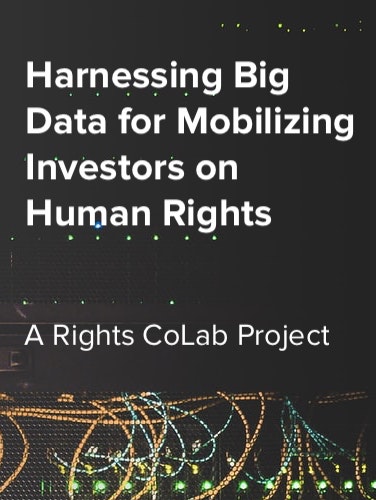Rights CoLab submitted comments to SASB on the Exposure Drafts of its revised Conceptual Framework and Rules of Procedure. According to SASB, “The Board’s decision to undertake these projects was based on the outdated organizational mission statement contained in the existing documents, as well as the Board’s view that the existing documents do not reflect SASB’s global context and that they contain outdated assumptions, definitions, and data.”
The comments are based on Rights CoLab’s year-long experience of working within the parameters of the Conceptual Framework to improve the human capital management standards with respect to human rights. They cover three areas: 1) SASB’s role in providing information to investors that supports long-term value creation; 2) the basis for metrics selection; and 3) the function of the five-dimension framework.
The Conceptual Framework consultation specifically asked whether the concept of financial materiality within the framework is “clear and understandable.” In response we note the tension between the Exposure Draft’s definition of financial materiality, its endorsement of “dynamic materiality,” and the aspiration to develop disclosure standards that are connected to long-term value creation. We write:
The concept of “dynamic materiality” suggests…that there is no clear line between the two types of materiality — financial risk and environmental/social risk –represented by the term “double materiality.” It is important to the ongoing development of SASB that the Conceptual Framework clarify how SASB will account for dynamic materiality in its own standard, and not just in relation to other complementary standards. In short, within the Framework, SASB must resolve the ambiguity surrounding at what point in the emergence of a potential risk that risk rises to the standard of financial materiality… As SASB aspires to assess “decision-useful information connected to long-term enterprise value creation,” what is the basis for deciding what is most likely to be material in the future?
Pointing to a diagram (Figure 3) in the Exposure Draft that illustrates a contrast between “Information that is material for sustainable development” and “Information that is also material for enterprise value creation,” we ask:
How do potential risks cross the barrier from “Information that is material for sustainable development” to “Information that is also material for [long-term] enterprise value creation”? …Any revision to the Conceptual Framework to make SASB a global standard needs to clarify how SASB accounts for future risk that can be anticipated – in particular, the characteristics of any transition of a risk/opportunity factor from “pre-financial” to “financial” materiality, and how SASB identifies and verifies this transition.
After addressing metrics development and questioning the value of the five dimension framework to standard setting, we conclude our letter with comments on the Rules of Procedure where we urge SASB to adopt a mechanism of proactive engagement with civil society subject matter experts.
The full letter can be accessed here: Comments to SASB on its Conceptual Framework, Rules of Procedure Exposure Drafts.


